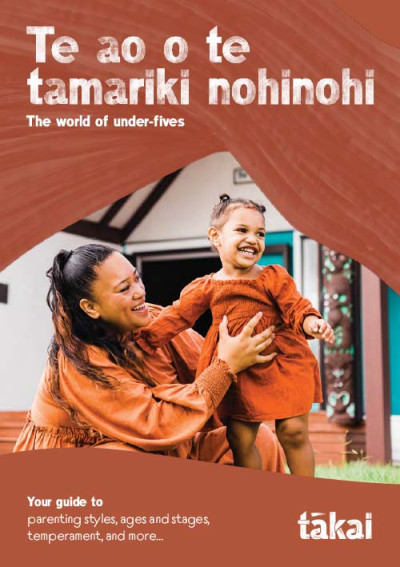
Temperament differences
Identifying our own temperament and those of our tamariki.
Learning goals
- Understand the concepts of temperament and traits.
- Apply these concepts to their children's characteristic behaviours.
Discuss the concept of temperament
Open with questions for the group:
- Do some of our kids’ behaviours annoy us more than their siblings’ behaviours?
- Why do you think that is?
Introduce the concept of ‘temperament’.
- This is a natural style of characteristic behaviours that we’re born with, and remains fairly constant throughout our lives.
- Clarify the differences between temperament and behaviour related to developmental age or stage (which will change as kids grow and develop).
Write up the 9 temperament traits covered in the ‘The origin of personality’ research by Chess, Thomas & Birch. Help the group to come up with examples of how each trait might be expressed.
|
Temperament trait |
Expression of trait |
Expression of trait |
|
Activity level |
High |
Low |
|
Attention span and persistence |
Persistent |
Not so persistent |
|
Distractibility |
Strong concentration |
Easily distracted |
|
Approach – withdrawal |
New situations with ease |
More cautious |
|
Adaptability to change |
Easily adapts |
Not easily adaptable |
|
Level of sensitivity |
Less sensitive |
More sensitive |
|
Intensity of reaction to stimuli |
Intense |
Less intense |
|
Quality of mood |
Happy disposition |
Negative disposition |
|
Regularity, rhythmicity |
Regular pattern |
Irregular pattern |
Consider our children's traits
Ask the participants to focus on one of their children and see if they can identify which of the traits they demonstrate most strongly.
Ask the participants:
- How might these traits affect a child’s learning or behaviour?
- How might they influence how other people respond to them? How might their traits affect their parents’ behaviour?
Record the responses. Repeat the activity for their other children or for themselves.
The temperament traits can be grouped into broad types:
- Easy and flexible
- Active
- Cautious
- Combination
Be aware that whānau might see some traits as good and others as bad. Try to help them understand that temperament traits have both strengths and weaknesses, and that kids, just like adults, aren’t all the same.
Some tamariki will need more support or encouragement in different areas and at different times for them to learn, behave in an acceptable way and develop to their full potential. Knowing when and how to help or encourage can make life a lot less stressful.
Extension activities
Create a ‘comparison chart’ for parents to see how similar or different they are in their temperament traits to their children.
Having some common household items to represent the different traits might help the group to remember them. For example:
- a skipping rope a mobile phone (high low activity levels)
- a nappy a pair of undies (adaptability to change)
- a soft cuddly toy a piece of sandpaper (level of sensitivity)
Ask the group what other symbols could be used.
Have paper and pens available. Invite them to take one trait each and create a visual representation of the two different aspects.
Resources
Tākai resources
Tākai The world of under-fives booklet(external link), pp. 14–15
Related articles
Other resources
The 9 temperament traits | Child Development Institute(external link)





